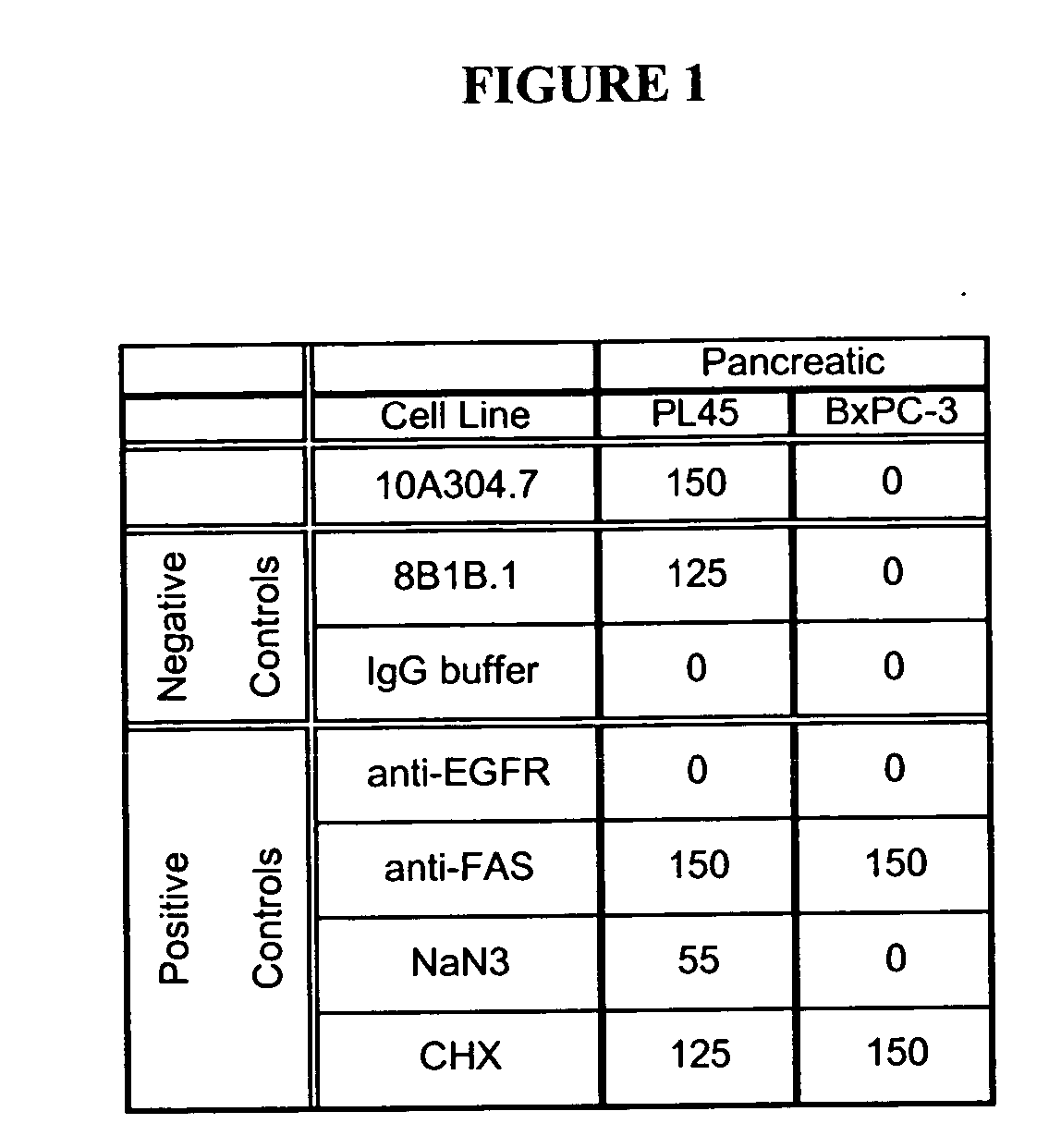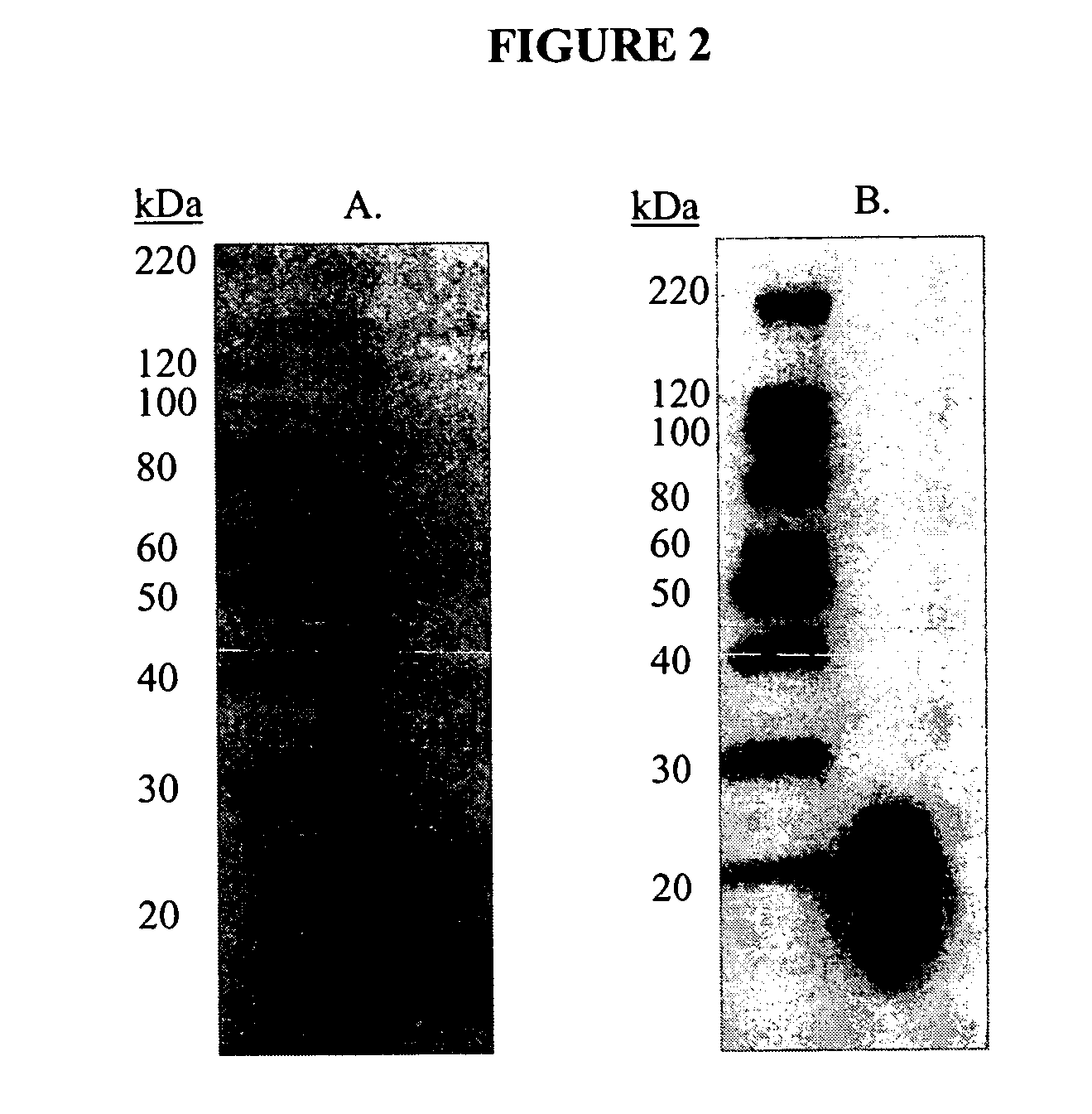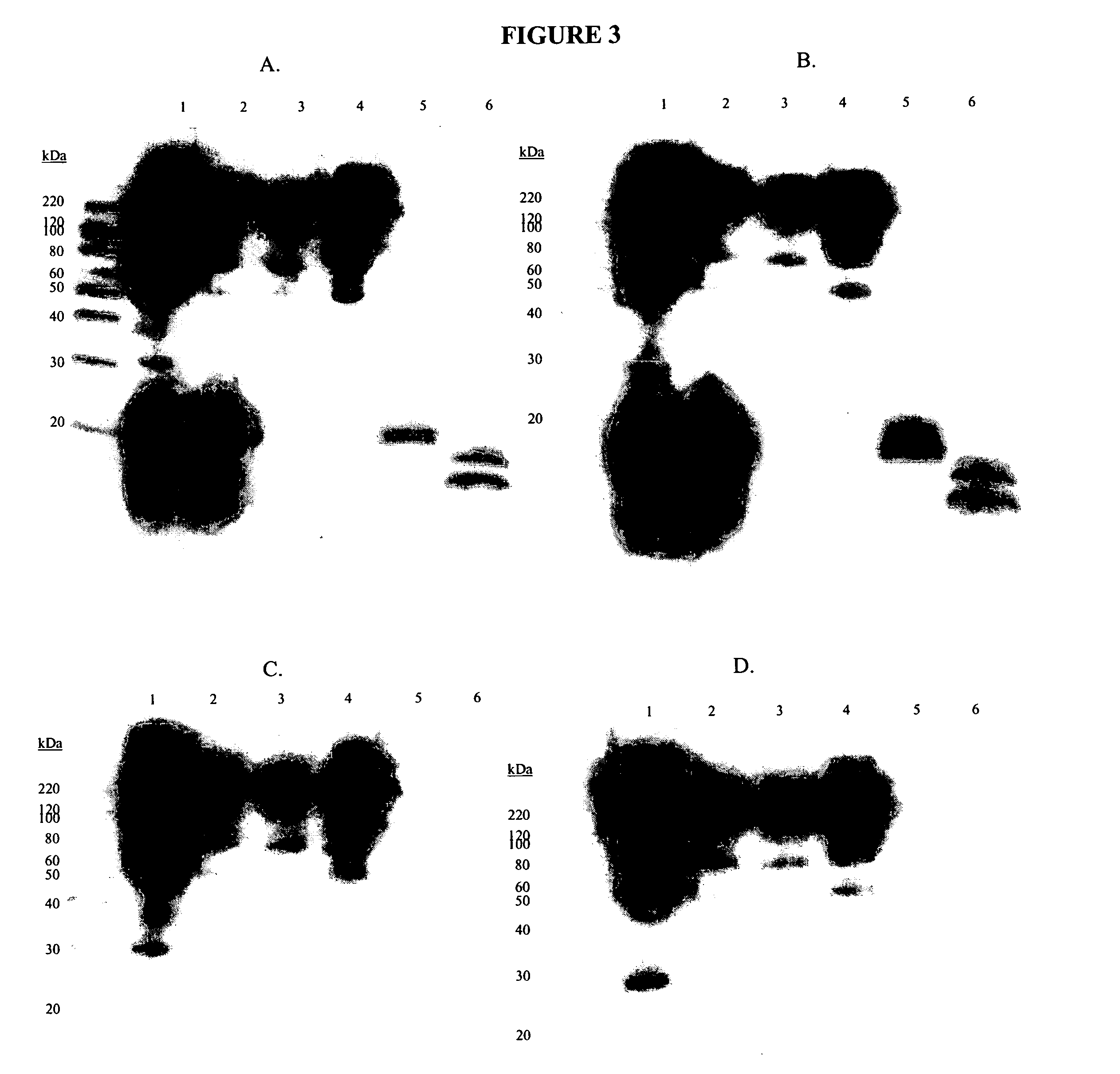Cytotoxicity mediation of cells evidencing surface expression of CD59
a cytotoxicity and surface expression technology, applied in the field of cancer diagnosis and treatment, can solve the problems of increased treatment failure probability, metastases, and inflammatory response that could damage targeted tissues, and achieve the effect of not being able to tailor chemotherapy and radiation treatment to the patient, and death
- Summary
- Abstract
- Description
- Claims
- Application Information
AI Technical Summary
Benefits of technology
Problems solved by technology
Method used
Image
Examples
example 1
[0124] 10A304.7 monoclonal antibody was produced by culturing the hybridoma in CL-1000 flasks (BD Biosciences, Oakville, ON) with collections and reseeding occurring twice / week. Standard antibody purification procedures with Protein G Sepharose 4 Fast Flow (Amersham Biosciences, Baie d∝Urfé, QC) were followed. It is within the scope of this invention to utilize monoclonal antibodies that are humanized, chimerized or murine.
[0125] 10A304.7 was compared to a number of both positive (anti-EGFR antibody (C225, IgG1, kappa, 5 micrograms / mL, Cedarlane, Hornby, ON; anti-FAS, IgM, kappa, 10 micrograms / mL, eBiosciences, San Diego, Calif.), cycloheximide (CHX, 0.5 micromolar, Sigma, Oakville, ON), and NaN3 (0.1%, Sigma, Oakville, ON)) controls, and a negative isotype control 8B1B.1 (anti-bluetongue virus, purified in-house), as well as a buffer diluent control in a cytotoxicity assay (FIG. 1). 10A304.7 and isotype control antibody were assessed at 10 micrograms / mL on t...
example 2
Identification of Binding Proteins by Western Blotting
[0126] To identify the antigens recognized by the antibodies 10A304.7 and AR36A36.11.1, cell membranes expressing the antigens were subjected to gel electrophoresis and transferred to membranes using Western blotting to determine the proteins bound by these antibodies.
1. Membrane Preparation
[0127] Previous work demonstrated that both 10A304.7 and AR36A36.11.1 showed efficacy against breast cancer as exemplified by the cell line MDA-MB-231 (MB-231) grown as xenografts in severe combined immunodeficient (SCID) mice. Accordingly, MB-231 membrane preparations were used for antigen identification. Total cell membranes were prepared from confluent cultures of MB-231 cells. Media was removed from cell stacks and the cells were washed in phosphate buffered saline (PBS). Cells were dissociated with dissociation buffer (Gibco-BRL, Grand Island, N.Y.) for 20 minutes at 37° C. on a platform shaker. Cells were collected and centrifuged a...
example 3
Cross-Immunoprecipitation and Deglycosylation of Antigens Bound by AR36A36.11.1 and 10A304.7
[0130] To determine if the antigens bound by 10A304.7 and AR36A36.11.1 were identical, MB-231 membranes were cross-immunoprecipitated with the two antibodies. The appropriate isotype controls (8A3B.6 for IgG2a, the isotype of AR36A36.11.1, and 8B1B.1 for IgG2b, the isotype of 10A304.7) were included to ensure that any reactivity was specific to the functional antibodies.
[0131] 200 micrograms of each antibody was diluted to 1 mL in 0.1 M sodium phosphate, pH 6.0. 100 microliters of protein G sepharose beads (Amersham Biosciences, Baie d'Urfé, QC) per antibody was washed 3 times in 1 mL 0.1 M sodium phosphate, pH 6.0. The diluted antibodies were added to the aliquots of beads and incubated for 1 hour at room temperature with rotational mixing. The unbound antibody was removed by spinning in a microcentrifuge at 14,000 rpm for 20 seconds, and then aspirating off the su...
PUM
| Property | Measurement | Unit |
|---|---|---|
| Fraction | aaaaa | aaaaa |
| Fraction | aaaaa | aaaaa |
| Fraction | aaaaa | aaaaa |
Abstract
Description
Claims
Application Information
 Login to View More
Login to View More - R&D
- Intellectual Property
- Life Sciences
- Materials
- Tech Scout
- Unparalleled Data Quality
- Higher Quality Content
- 60% Fewer Hallucinations
Browse by: Latest US Patents, China's latest patents, Technical Efficacy Thesaurus, Application Domain, Technology Topic, Popular Technical Reports.
© 2025 PatSnap. All rights reserved.Legal|Privacy policy|Modern Slavery Act Transparency Statement|Sitemap|About US| Contact US: help@patsnap.com



